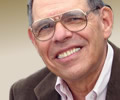Wagner’s most popular opera returned to the Met this season after an absence of almost 17 years. This new production was directed by François Girard with sets and costume by Tim Yip. The staging uses stark walls and a circular device through which moved a succession of moons. Stars dominated the third act. The choristers wore magnet controlled costumes that displayed robes with white, green, or red linings that were supposed to reflect the dominant mood at the time they were exposed. It was a clever idea that was overused, It was frankly tiresome by the opera’s end. Having some of the choristers march off stage in Act 2 with the their necks so arched they looked more like roosters than opera performers added inappropriate mirth. The rest of the sets were dark structures that were serviceable though they gave no hint as to what they were to represent. As a whole the production was adequate at suggesting a time in early European history when Christianity was finally replacing paganism. Alas, though often mentioned the opera’s famous swan was a directorial casualty. He (I think) was canceled, though there was a hint of white wings at the opera’s end.
The production was savaged by the New York critics. While it’s not the best work to appear on the Met’s august platform it got the job done with little that was offensive and did not distract from the performance. A gentleman’s C, to use an archaic reference.
Lohengrin is the Wagner opera that often attracts an Italianate tenor to sing the title role. The Polish tenor Piotr Beczala has sung mostly Italian roles since his debut with at the Met in 2006. Clad in a white shirt with rolled cuffs and dark pants he looked like he was about to give everyone a menu. As the knight on a mission he was a model of composure and dignity. His singing was lovely and elegantly phrased. While not a heldentenor, he had the power required for a role that focuses on the tenor’s midrange. He also managed the part’s delicate and quiet passages. He sounded just as fresh at the opera’s end as he did at its start. As always, he looked and acted as though he were 20 years younger than his 56 years. A fine performance by a fine artist.
The opera’s best known aria, In fernem land’, was sung by Beczala with grace end effortless phrasing.
Tamara Wilson was Elsa. The maiden falsely accused of murdering her brother. He had been transformed into the missing swan by the sorceress Ortrud before the opera’s beginning. He magically appeared as a blond aryan god at the opera’s conclusion. Elsa is the girl who has to ask the question she’s promised not to – namely what’s Lohengrin’s name and history. It’s politically incorrect to have a heroine who is a silly nitwit. Wilson’s soprano is at turns steely, edgy, luminous, and pretty good. She didn’t inhabit her part as did Beczala. The love duet which precedes the fatal question seemed devoid of passion.
Christine Goerke was the vengeful sorceress Ortrud. She has all the Wagnerian power needed for the witch who’s not giving up against the new order without a fight. While her voice was up to the demand’s of the fierce part her acting was out of a silent movie. Lots of sinuous and twisted gestures.
He partner in evil, Telramund, was portrayed by Evgeny Nikitin who gave an vocally colorless performance that lacked sufficient menace. Brian Mulligan was the Herald with a clear and well placed voice. King Heinrich was very well sung by Günther Groesbeck who has mastered that technique of singing out of the right side of his mouth.
The chorus has a large part in this opera. There seemed to be enough of them to repel the Hungarian invasion mentioned in Act 1. When not fusing with magnets they sang very well.
Maestro Yannick Nézet-Séguin led a compelling performance of Wagner’s brilliant and nuanced score. He realized all of its power and beauty. Of course, anything by Wagner has its longueurs, but much of the score is inspired explaining its popularity. Definitely worth catching the repeat or going to the Met if you’re in New York.
Metropolitan Opera House
March 18, 2023
LOHENGRIN
Wagner-Wagner
Lohengrin……………..Piotr Beczala
Elsa………………….Tamara Wilson
Ortrud………………..Christine Goerke
Telramund……………..Evgeny Nikitin
King Heinrich………….Günther Groesbeck
Herald………………..Brian Mulligan
Gottfried……………..Andrew Spriggs
Noble…………………Errin Duane Brooks
Noble…………………Thomas Capobianco
Noble…………………Anthony Clark Evans
Noble…………………Stefan Egerstrom
Page………………….Catherine MiEun Choi-Steckmeyer
Page………………….Andrea Coleman
Page………………….Alexa Jarvis
Page………………….Anne Nonnemacher
Conductor……………..Yannick Nézet-Séguin
Production…………….François Girard
Set and Costume Designer…..Tim Yip
Lighting Designer………David Finn
Projection Designer…….Peter Flaherty
Choreographer…………..Serge Bennathan
Dramaturg……………..Serge Lamothe
Video Director……….Gary Halvorson







I have somehow been taken off your list, such that I am not receiving your blogs. Please have your staff place me back on your email list. I love your comments regarding the operas on HD, even though I don’t always agree with your impressions
Harry Senekjian